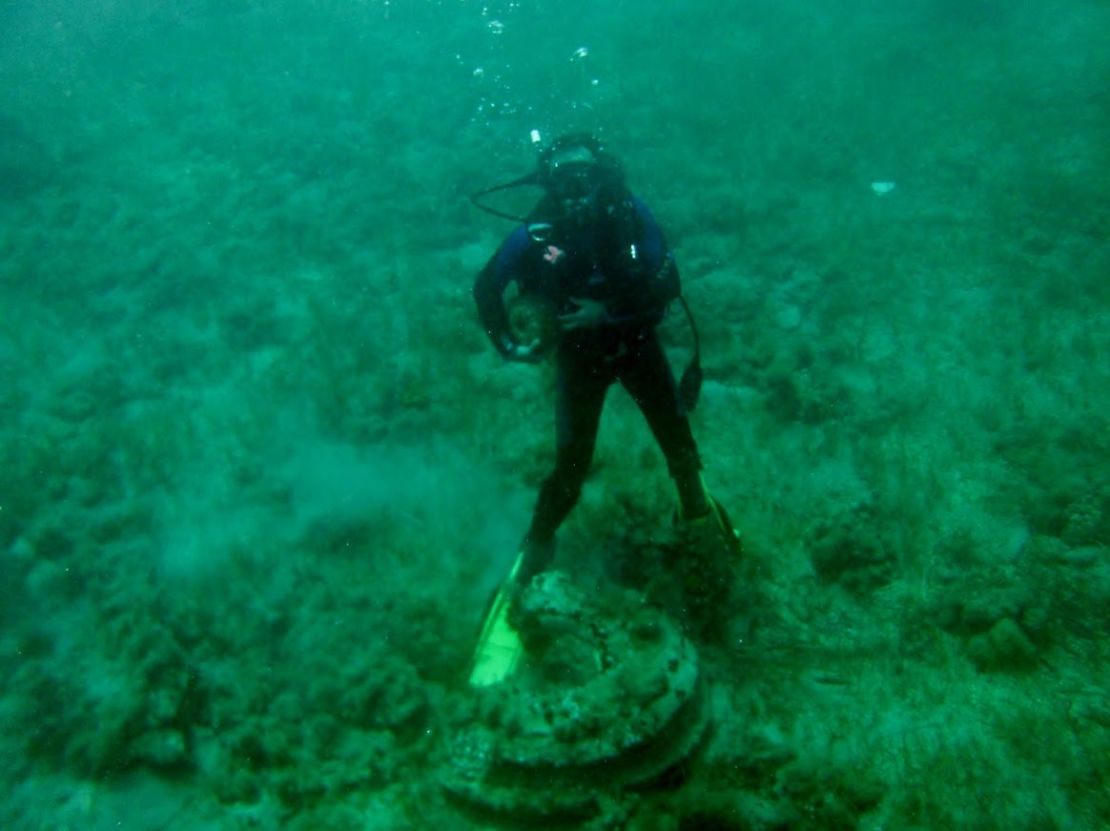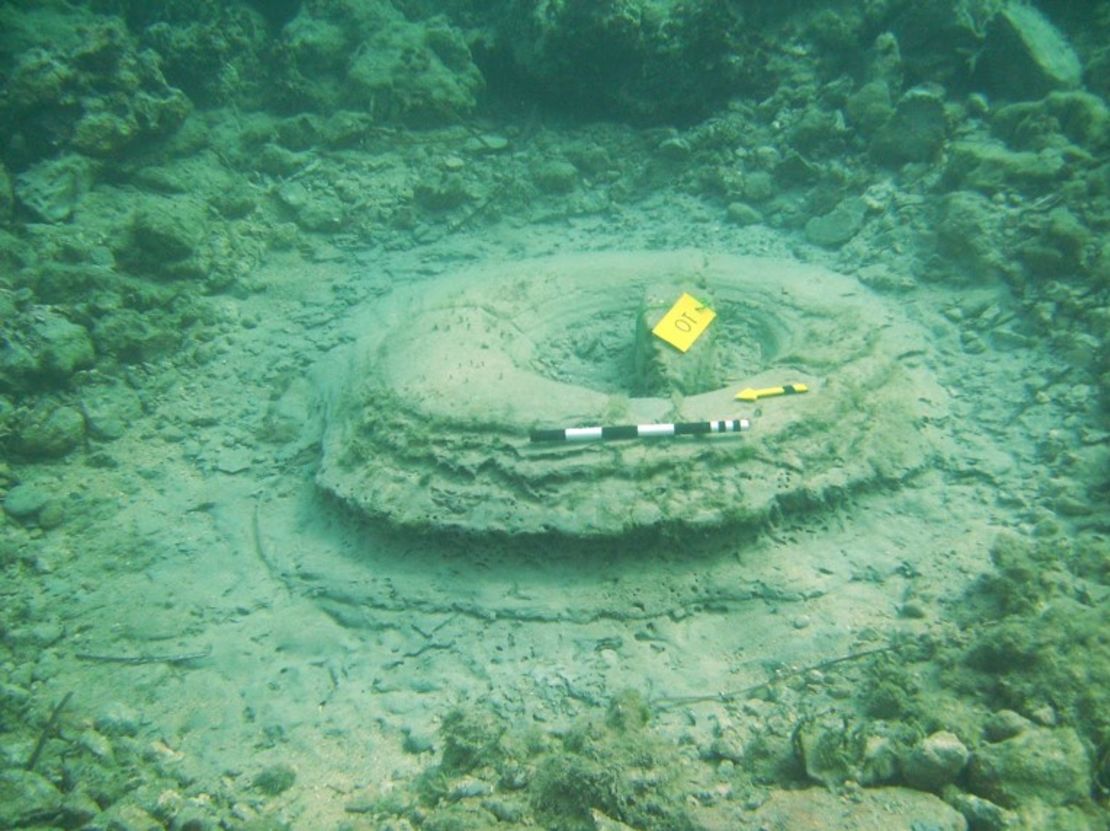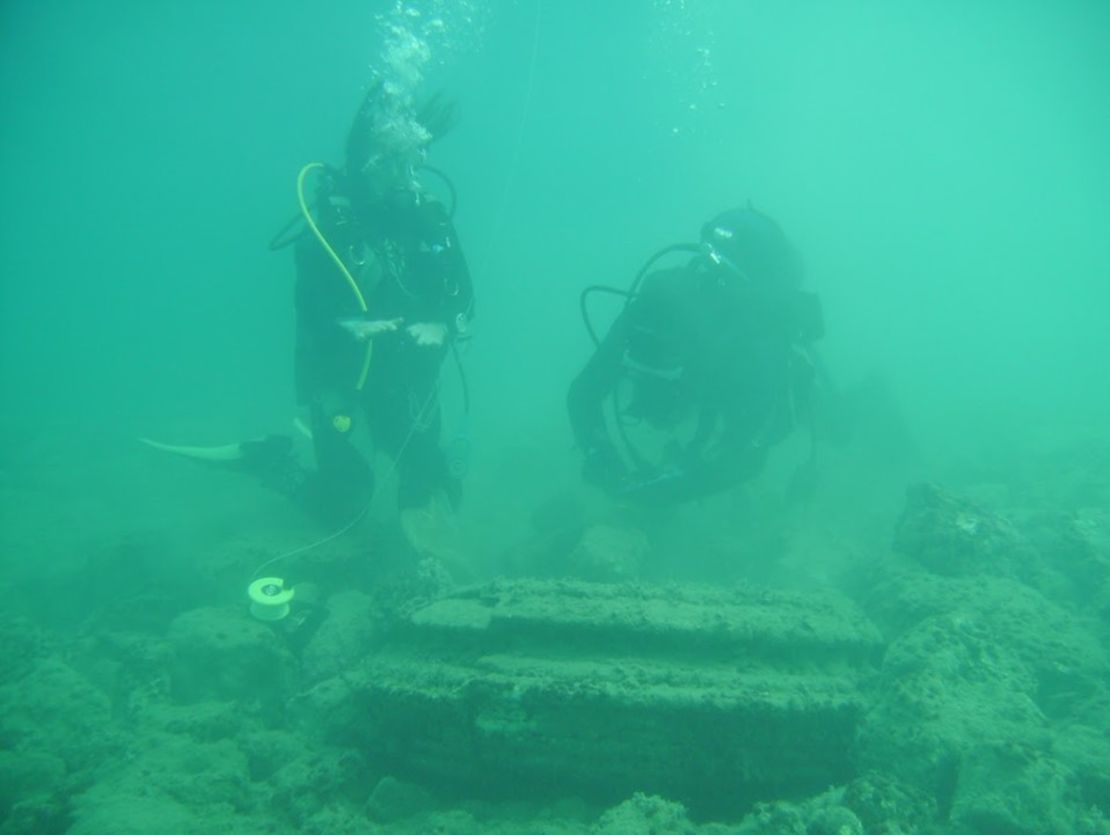Story highlights
Ancient underwater 'lost city' actually a geological phenomenon
Research shows the structures are exhumed fossil concretions
When divers discovered circular columns and paved floors, they thought they had found the ruins of a long-forgotten civilization on the shores of the Greek island Zakynthos.
But what was once thought to be an ancient underwater “lost city” is actually a naturally occurring phenomenon, scientists have found.
New research published in the Marine and Petroleum Geology journal today reveals the ancient underwater site was actually created by a natural geological phenomenon around five million years ago.

Underwater myth busters
Lead author of the research, Professor Julian Andrews, from the University of East Anglia’s School of Environmental Sciences, told CNN: “The suggestion that they were archaeological remains was brought about by tourists who were swimming around and saw these things and thought they were stone work.”
Greek authorities investigated the site, however they found no supporting evidence that this was an ancient city port that was lost to the sea.
Divers discover ancient Roman treasure trove in shipwreck
“Mysteriously [there was] no other signs of life – such as pottery,” Andrews said.
After the preliminary analysis, Andrews and Professor Michael Stamatakis from the Department of Geology and Geoenvironment at the University of Athens then investigated the mineral content and texture of the underwater formation.
“We investigated the site, which is between two and five meters (six and sixteen feet) underwater, and found that it is actually a natural geological occurring phenomenon,” Andrews said.

Spectacular ‘plumbing’ below the seabed
He explained the disk and doughnut structures are typical of mineralization of hydrocarbon seeps – areas of the sea floor where natural gases occur.
“We found that the linear distribution of these doughnut-shaped concretions is likely the result of a sub-surface fault which has not fully ruptured the surface of the sea bed,” he explained.
“It’s almost like a plumbing situation below the seabed.”
How a diamond rush led to an ancient underwater secret
As detailed in the report, microbes in the sediment use the carbon in methane as fuel, which then eventually changes the chemistry of the sediment to form a natural cement – known as concretion.
“In this case the cement was an unusual mineral called dolomite which rarely forms in seawater, but can be quite common in microbe-rich sediments,” Andrews said.

The research shows the structures are a fossil feature from the Pliocene age, which has since been exhumed by sea currents.
“There’s no active fluid venting at this site, but having said that there are many around the world,” Andrews explained. “These gas leaks are quite common, they’re not an unusual phenomenon – the earth’s crust is quite a leaky material.”
A rare discovery
There have been many discoveries like this worldwide, however most have been reported in deeper waters.
But while the formation process is not unusual, it is rare for the discovery to be in a shallow setting.
Inside a 16th century Portuguese shipwreck
“The majority of discoveries have been reported in much deeper water,” Andrews said. “But having said that, very early seep examples were found in the North Sea – which isn’t particularly deep – but it is a little unusual that it’s right on the coast.”

While the “lost city” originally attracted divers, Andrews does not believe the new research will impact tourism.
“They’re quite beautiful things in their own right and people like to look at bizarre structures,” he said.
“They almost act like a reef, so they provide lots of little refuges for fish to live in.”
